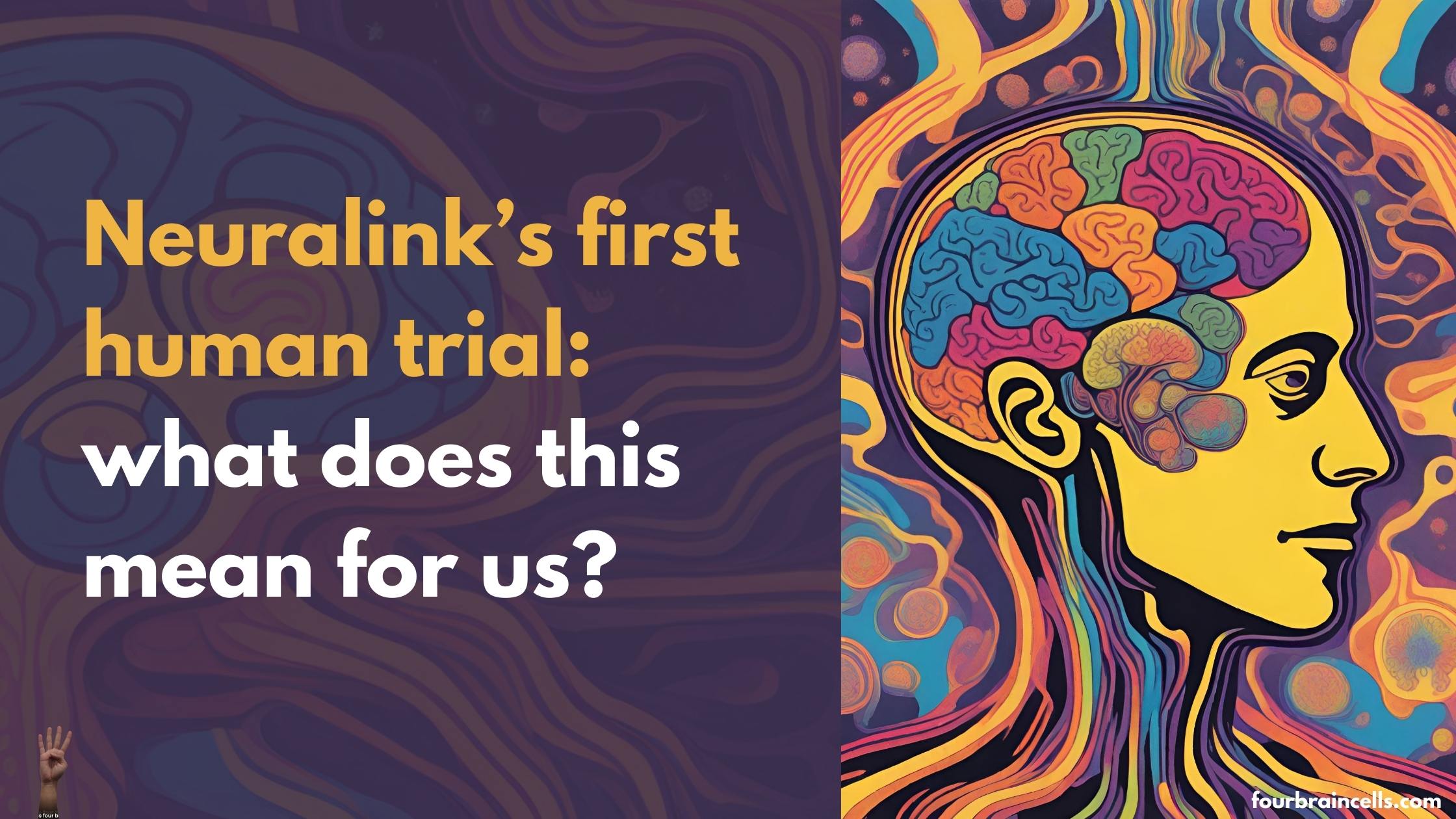NeuraLink, Elon Musk’s neurotechnology company, is hitting the headlines for implanting its first chip in the human brain- and I can’t stop thinking about it.
According to Musk, the first patient has shown “promising neuron spike detection and is recovering well.”
As you might know, neurons, or brain cells, are the basis of your entire existence. Every thought you think, your consciousness, your actions- it’s all just a bunch of electrical impulses shot here and there through your body.
We can now detect and use those impulses to perform actions only by thinking about them.
Feels weird, right?
What is Neuralink Doing?
In 2020, Neuralink released a video of a healthy, happy pig named Gertrude. Every time she munched or sniffed, the chip nestled in her brain would detect impulses and seamlessly translate them into real-time data, all while she was completely free to roam around.
But that was just the beginning.
Soon after that, videos of a monkey playing Pong and typing merely by thinking broke the internet. The boundaries between mind and machine blurred, and people were getting excited.
Fast forward to May 2023, the US FDA granted Neuralink approval for conducting human trials, and we now have the chip inside a human brain. Yes, a literal implant that allows you to move a cursor, type on a keyboard, or control your phone only by thinking.
And they’re thinking of calling it Telepathy, of course.
This human clinical trial named PRIME (Precise Robotic IMplanted Brain-Computer Interface) is targeted at patients suffering from paralysis due to spinal cord injury or Amyotrophic Lateral Sclerosis (ALS).
“Imagine if Stephen Hawking could communicate faster than a speed typist or auctioneer. That is the goal,” writes Elon on X.
And this goal will be achieved with the help of a tiny implant with 64 fine threads, 1024 electrodes, and a surgical robot to place it inside your skull.
Crazy, eh?

Big Brain Time
Neuralink’s not the only one doing this though, a plethora of other companies are far ahead- Blackrock Neurotech, Precision Neuroscience, and BrainGate to name a few.
In 2004, Matthew Nagle used BrainGate’s neural implant, Utah array, to open an e-mail, draw a circle-ish figure using a paint program, adjust the volume on the TV, play video games like Neural Pong, and even control a prosthetic hand.
Cathy Hutchinson, another woman paralyzed by a stroke, could control a robotic arm just by thinking.
“For the first time since her stroke, she was able to pick up a bottle containing coffee and drink it without any assistance. The joy on her face from taking that drink using the robot arm was unforgettable “, says Dr. Leigh Hochberg, an American neurologist.
Researchers at UC San Francisco have also been able to translate a severely paralyzed patient’s thoughts into coherent words and sentences, all by measuring cortical activity via an implant.
Synchron, another BCI venture, performed a one-year-long clinical study in 4 paralysis patients, implanting a neuroprosthetic device via the blood vessels.
All the patients could use the implant for texting, emailing, online shopping, and basic communication, and the study showed no serious adverse effects related to the device.
And yes, Synchron didn’t need to crack the skull open to do so.
When you cut open a human surgically and insert a foreign object, there are a hundred factors that could complicate its function.
Why would Neuralink work on something more invasive, then?
Would it be biocompatible long-term?
How much bandwidth can this chip with 1024 electrodes sustain?
With barely any transparency, Neuralink has been raising many eyebrows. While it claims that it has FDA approval, the PRIME trial isn’t listed on ClinicalTrials.gov.
Animal rights activists haven’t exactly been happy either, with alleged reports of nearly 1500 animals being tested and killed.
Neuralink maintains that it wants to help patients who have “vision, motor function, and speech impairments, and eventually expand how we experience the world.” Needless to say, any new development involves the risk of making questionable choices, and if technology like this does prove to be a ray of hope, I don’t mind the possibility of being a cyborg.
However, Elon’s often hinted at something even bigger: achieving symbiosis with technology.
So where are we heading?
Think of cochlear implants, and how someone who was nearly deaf can now hear and live normally. For such patients, a working Brain-Computer Interface gives hope– something we can all have a little more of.
As Dan Brown writes in his book Origin:
“If you don’t believe that humans and technology will fuse, take a look around you. These are just the primitive beginnings of this symbiosis. We are now starting to embed computer chips directly into our brain, inject our blood with tiny cholesterol eating nanobots that live in us forever, build synthetic limbs that are controlled by our minds, use genetic editing tools like CRISPR to modify our genome, and quite literally, engineer an enhanced version of ourselves.”
Honestly, the thought of a Black Mirror crossover with Upload in the background of The Expanse with Orwell’s 1984 thought police looming over us doesn’t sound too bad, right?
We’re going to have the choice of either being left behind and being effectively useless or like a pet—you know, like a house cat or something—or eventually figuring out some way to be symbiotic and merge with AI. If you cannot beat ‘em, join ‘em.
Elon Musk
With colonizing Mars, enabling transhumanism, and selling flamethrowers being an everyday conversation, we’re at a stage where it’s too late to worry about impossibility.
If all goes well, we’re going to have a whole new set of ethics to worry about: neuromarketing, brainjacking, thought police, data concerns, mass adoption, and most importantly- your autonomy.
For they’ll be in our heads- literally.
Four Brain Cells
Like what you read? Tell a friend!

Leave a Reply